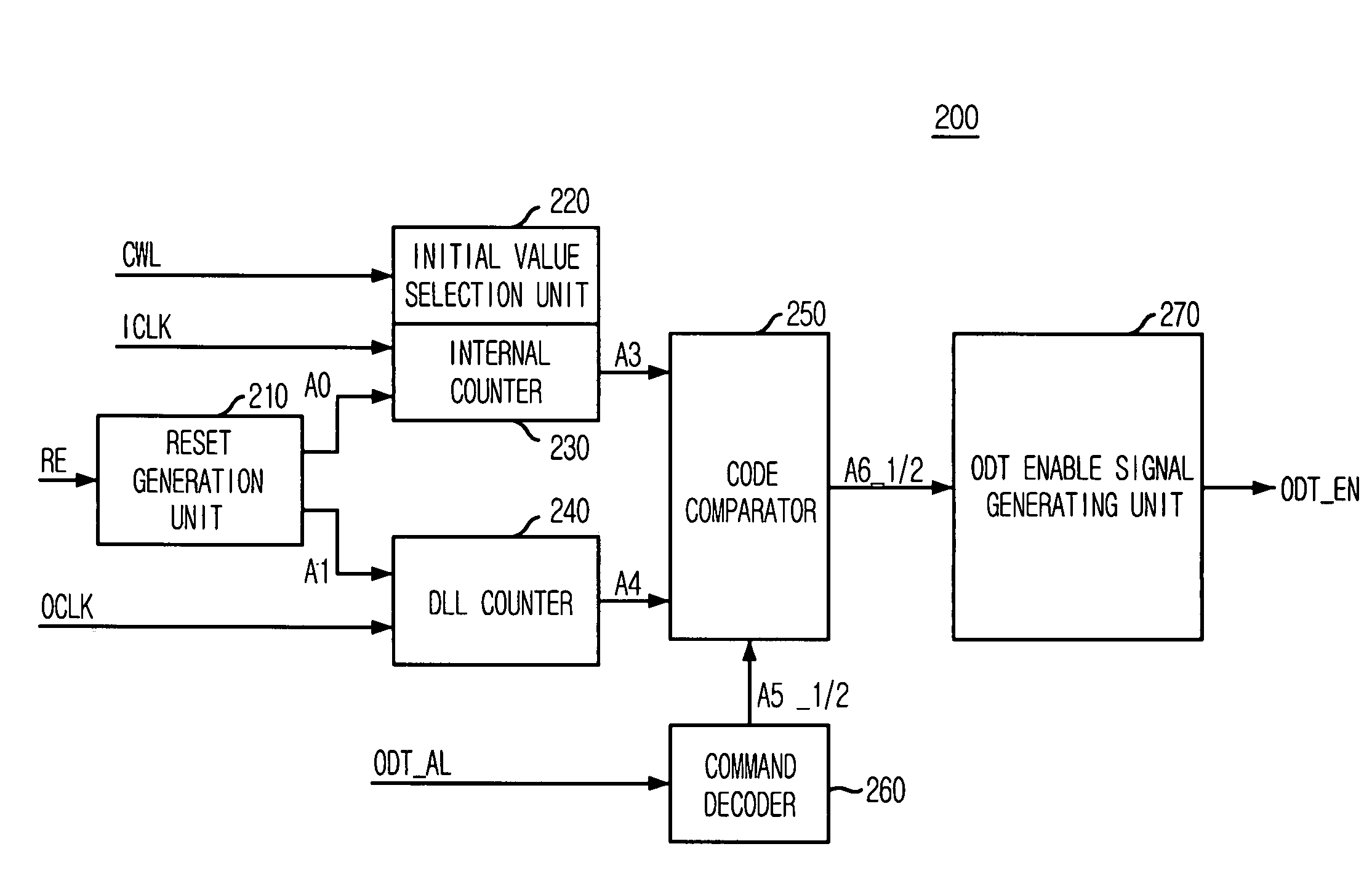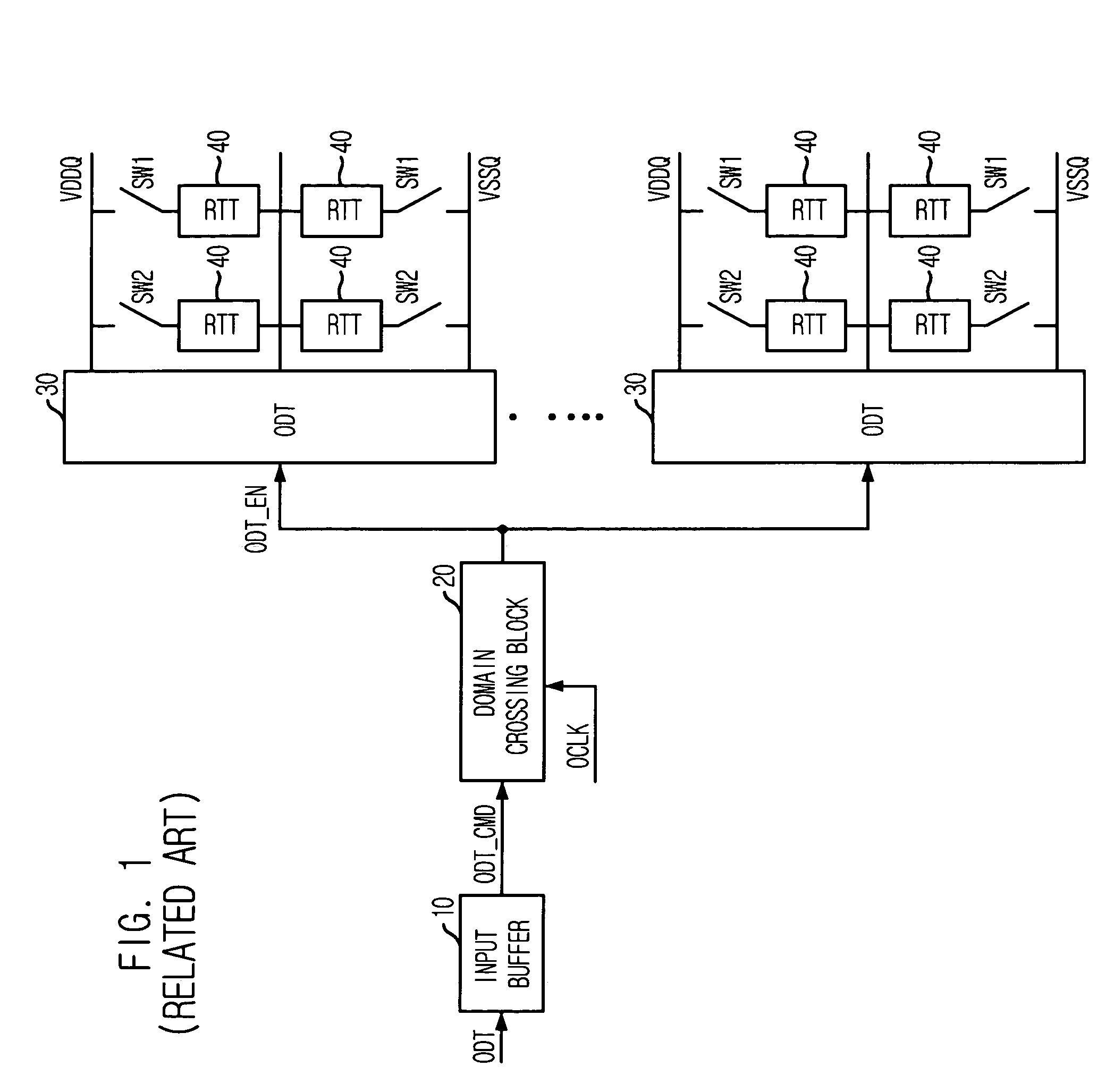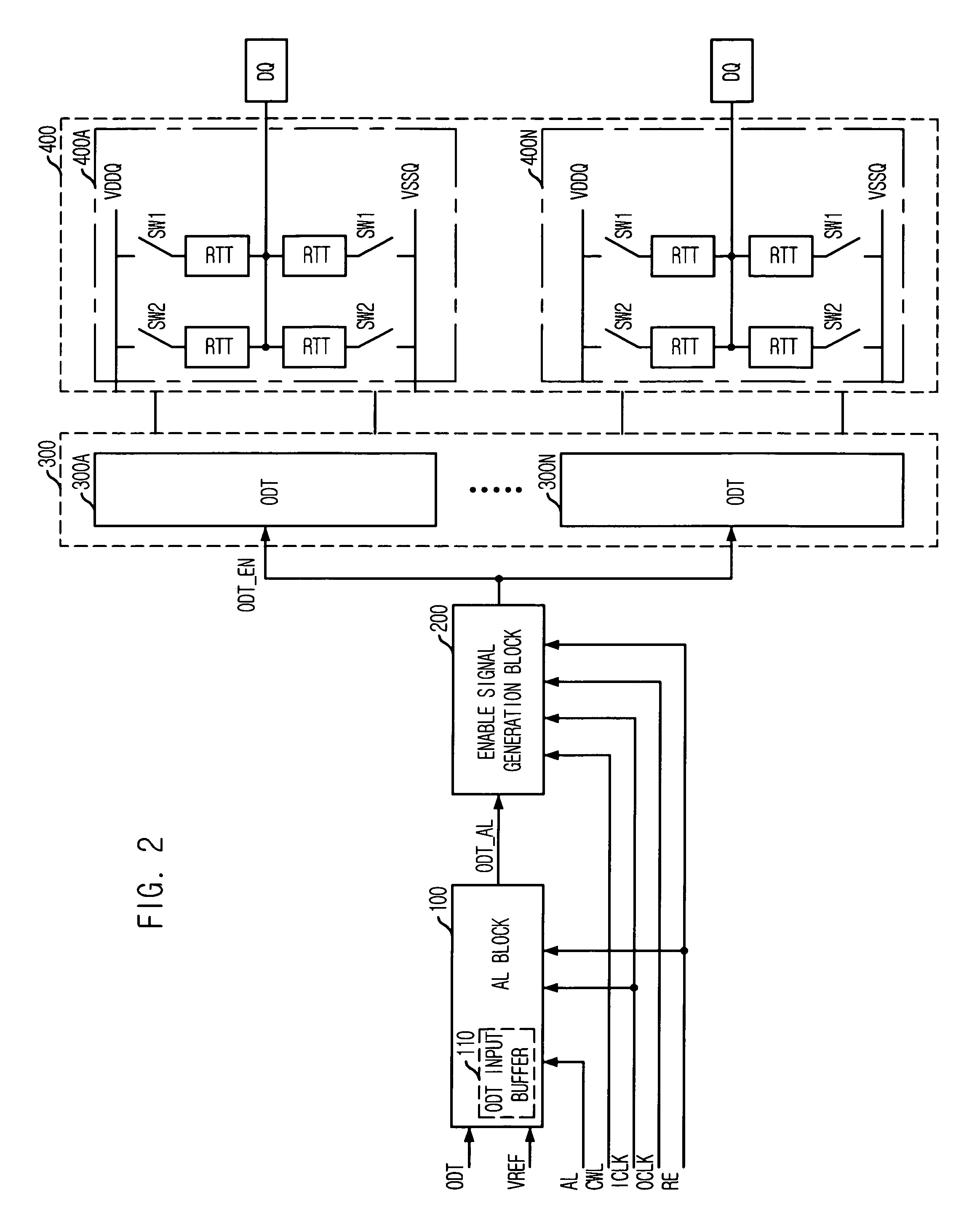Device for controlling on die termination
a technology of termination device and die, applied in the direction of logic circuit coupling/interface arrangement, pulse technique, instruments, etc., can solve the problems of difficult control of the active period of the odt, signal reflection error can occur, and inability to obtain appropriate matching
- Summary
- Abstract
- Description
- Claims
- Application Information
AI Technical Summary
Benefits of technology
Problems solved by technology
Method used
Image
Examples
Embodiment Construction
[0021]Hereinafter, an on die termination (ODT) control device in accordance with the present invention will be described in detail referring to the accompanying drawings.
[0022]FIG. 2 is a block diagram showing an ODT control device in accordance with an embodiment of the present invention.
[0023]The ODT control device includes an additive latency (AL) block 100, an enable signal generation block 200, an ODT block 300 and a termination resistor block 400.
[0024]The AL block 100 performs a buffering operation of an ODT control signal ODT and a reference voltage VREF and receives an additive latency signal AL, an internal clock ICLK and a reset signal RE to generate a latency control signal ODT_AL. The additive latency signal AL defines how many clocks are required from a point of loading a read command or a write command to a point of recognizing them during a read or a write operation.
[0025]The enable signal generation block 200 receives the latency control signal ODT_AL, a column addr...
PUM
 Login to View More
Login to View More Abstract
Description
Claims
Application Information
 Login to View More
Login to View More - R&D
- Intellectual Property
- Life Sciences
- Materials
- Tech Scout
- Unparalleled Data Quality
- Higher Quality Content
- 60% Fewer Hallucinations
Browse by: Latest US Patents, China's latest patents, Technical Efficacy Thesaurus, Application Domain, Technology Topic, Popular Technical Reports.
© 2025 PatSnap. All rights reserved.Legal|Privacy policy|Modern Slavery Act Transparency Statement|Sitemap|About US| Contact US: help@patsnap.com



